Top Takeaways and Key Concepts
- Clear flammable debris like dry leaves and branches to reduce wildfire risk around your home.
- Create defensible space by trimming trees, removing dead plants, and keeping grass short.
- Prepare an emergency kit with water, food, flashlights, documents, and first-aid supplies.
- Stay informed using wildfire alert apps and local emergency news updates.
- Plan evacuation routes and meeting points with family before a wildfire emergency happens.
Summary of This Article
Please Note: This post may contain affiliate links. If you click one of them, we may receive a commission at no extra cost to you. As an Amazon Associate, I earn from qualifying purchases.
This article explains why wildfire preparedness is essential and how to take smart steps before disaster strikes. Wildfires spread quickly in dry and windy conditions and can escalate from a tiny spark to a dangerous inferno. To protect yourself, the article stresses clearing flammable materials from around your home, creating a defensible safety zone, and staying organized with an emergency kit packed with essentials and important documents. Staying informed through alerts and local news helps you react fast, while having a family evacuation plan ensures everyone knows where to go. With preparation, you can stay calm, safe, and ready when wildfire danger threatens.
Short Video Version of this Article
Wildfires may be very dangerous. They’re like that one person who comes to a party and makes everything crazy. You know, the one who turns the barbecue over and suddenly there are flames everywhere! It starts out small, like a spark from a cigarette or a wildfire that develops too huge. Then, boom! Your beautiful day transforms into a scramble to get to safety.
It makes me shudder to think about it. It feels like you’re on “Survivor: Backyard Edition,” doesn’t it? One minute you’re cooking burgers, and the next you’re running away from flames like an action hero.
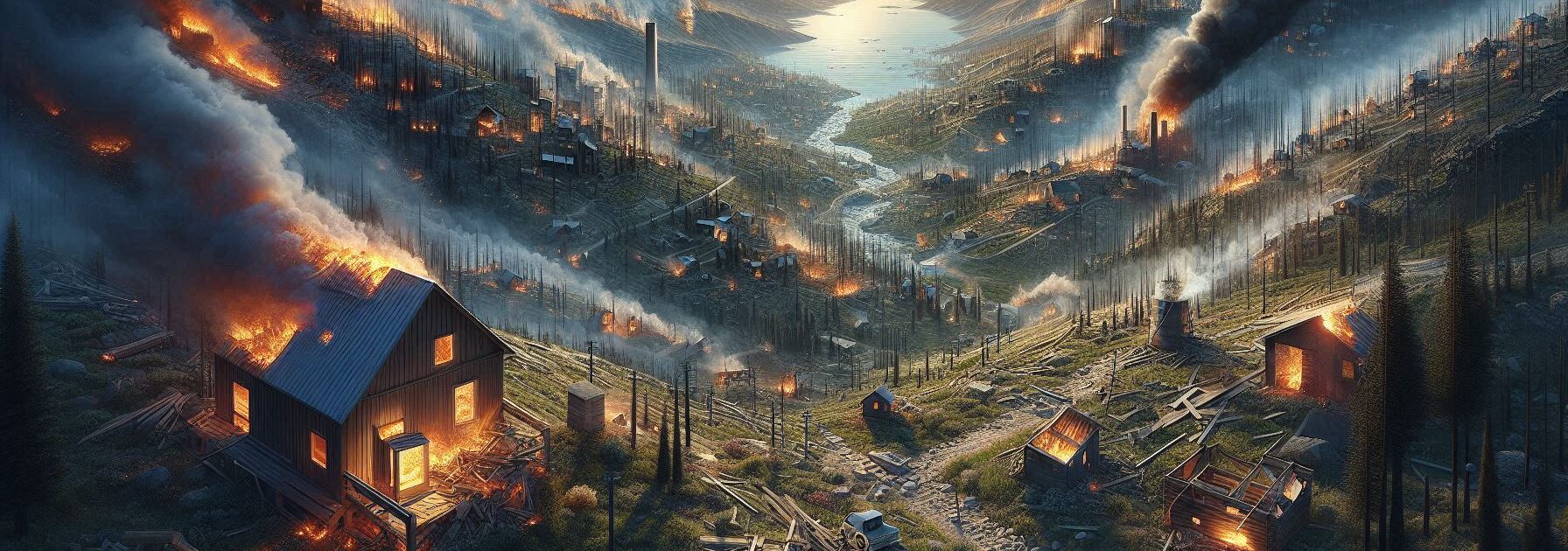
It’s really vital to be ready for wildfires. Before things get heated, you should be wise about it. Check your yard first. Get rid of any dry leaves or branches that could readily catch fire. It also helps to keep your grass short.
Pack an emergency kit with water, snacks, and maybe even a flashlight in case it gets dark quickly. And make sure you and your family or friends have a plan for where to go if things get out of hand. Talking about it can help everyone feel safer.
If fires get close, think about what else you might need. Maybe some gear to keep you safe or a technique to keep the smoke out of your face? It’s all about being prepared.
These things will help you stay calm when things get hectic outdoors. When you know you have a plan, fighting those flaming enemies doesn’t seem as scary. Let’s all be safe out there!
Understanding Wildfires: The Basics
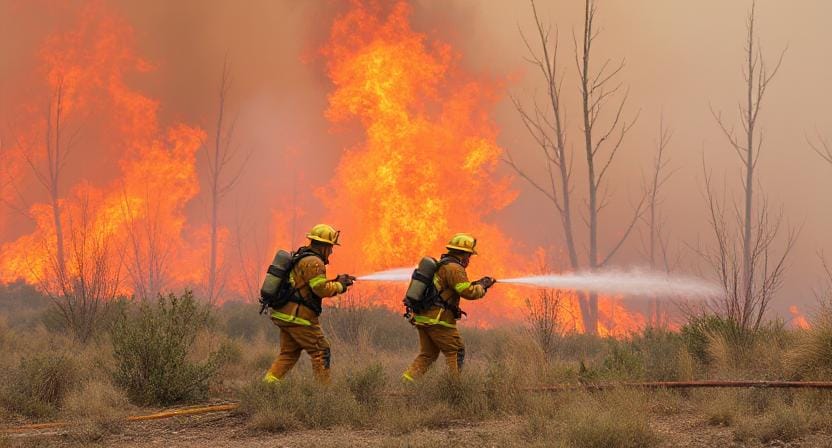
First, let’s learn about wildfires. These fires aren’t just any old fires; they’re nature’s way of reminding us who’s really in charge. Wildfires can happen in grasslands, woodlands, and even scrub areas. They do best when it’s dry, windy, and there is a lot of fuel, which is anything that might catch fire.
Take a moment to think about it. One little spark can turn into a big disaster faster than you can say “pass the s’mores” if there is enough dry stuff laying around, including leaves, twigs, and other things. It’s crazy!
Wildfires can be really scary, but here’s something interesting: they aren’t always terrible news. Some plants need fire to help them grow back stronger. Like how I need coffee in the morning to wake up! Those plants have learned how to use fire to help them grow. That’s cool, right?
But what happens when the flames approach too close to homes and people? That’s when things get real. So we can’t simply sit back and have our s’mores. We need to be ready.
Taking action involves being thoughtful about where we live and what we do. It really helps to keep yards neat! Taking away all that dry things makes it tougher for fires to spread. It’s also important to have a strategy with family or friends. It’s less scary to know where to go if things go dangerous.
So, yes, wildfires are a part of nature, but we need to safeguard ourselves too. Let’s all be careful and keep our eyes open!
Creating a Defensible Space
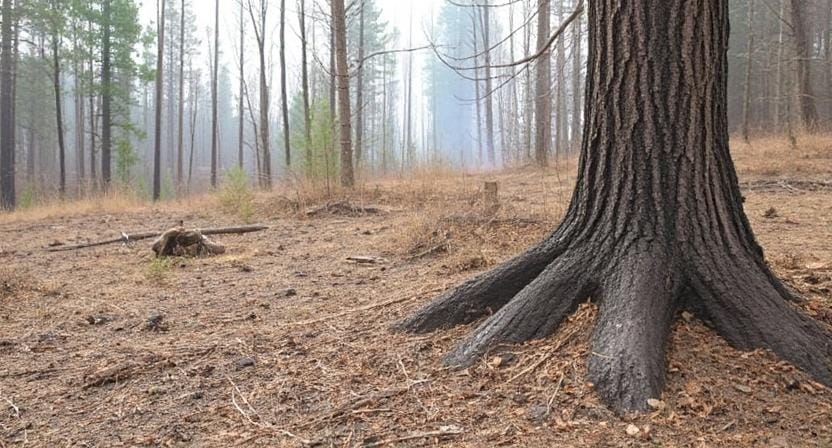
If you live in an area prone to wildfires (which is basically anywhere with more trees than people), creating a defensible space around your home is crucial. This means clearing away any flammable materials within 30 feet of your house—think dry leaves, wood piles, or that old lawn chair that looks like it survived three college parties.
To be fair, this isn’t just about aesthetics; it could literally save your home! Trim back bushes and trees so they don’t touch your roof or windows. It might feel like you’re giving Mother Nature a haircut she didn’t ask for, but she’ll thank you later when her fiery friends come knocking.
And speaking of trimming things back—if you’ve got dead branches hanging over your house like those old holiday decorations we all forget to take down? Yeah, it’s time to get rid of those! Seriously.
Those branches can catch fire so easily. You don’t want anything like that too close to your home when wildfires are around. It’s like giving flames a welcome mat right at your door. Not cool!
Picture your home looking smart and ready to fight any flames that come its way. Doesn’t that feel good? And it makes your yard appear better, too! A little cleaning may make a big difference.
Get some gloves and maybe a couple of friends. It can be a little fun! You’ll feel good about doing something wise to stay safe. And if you uncover some cool things while you’re cleaning up, that’s just a bonus!
Let’s keep our homes secure and warm so we can enjoy our coffee without worrying about surprise guests, like wildfires.
Emergency Kits: What You Should Pack
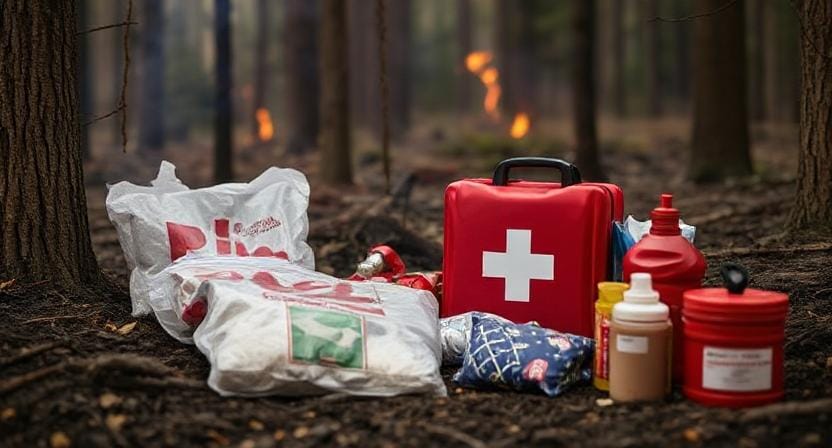
Now that we’ve covered defensible spaces let’s talk about emergency kits because nothing says preparedness quite like having supplies ready to go! If I’ve learned anything from camping trips gone wrong (like the time I forgot my tent poles), it’s that being prepared makes all the difference.
Start by gathering essentials such as water (a gallon per person per day for at least three days), non-perishable food items (because nobody wants to eat stale crackers during an evacuation), flashlights with extra batteries (for navigating through smoke-filled darkness), and first-aid supplies (because accidents happen).
Don’t forget about those important documents! You know, things like insurance papers and medical records. Keep them easy to grab. No one wants to be digging through drawers when flames are getting too close for comfort. That’s just stressful!
Think about it. If you have everything ready, it’ll make a tough situation feel a little less chaotic. It’s like packing your bag for a fun trip—only this time, you’re packing for safety.
And hey, while you’re at it, consider adding some comfort items too. A favorite book or cozy blanket can really help during those scary moments. Imagine snuggling up with that blanket while waiting somewhere safe. It makes the whole thing feel a bit better.
If you have to evacuate because of wildfire danger, why not do it in style? Bring along what makes you feel good! You deserve that little bit of comfort amidst all the craziness.
So let’s get organized together! We can face anything as long as we’re prepared and have our favorite things by our side.
Staying Informed: Monitoring Fire Conditions
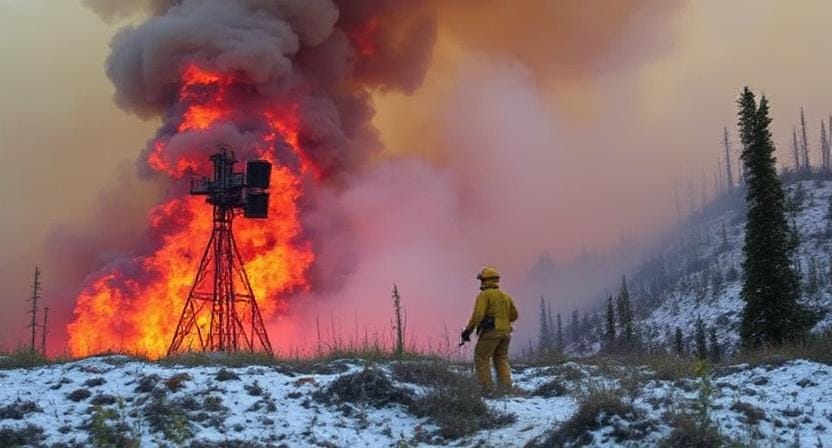
By the way, anyone who lives in places that are likely to have wildfires should keep up with the latest fire conditions. You may find a lot of information online on the weather in your area or the risk of fire. It’s nearly as easy as checking your relatives’ Instagram updates!
FEMA and the Red Cross are two apps that are quite useful. They provide you alerts right away when there are fires around you. Imagine them as your own personal wildfire guards! And you know what? It’s a success that they don’t need rewards every hour!
It’s important to stay up to date. You might also follow local news stations on social media. When there are fires, they send out immediate alerts about evacuations and safety measures. It’s like having a friend who is always up to date.
This is a real case of knowledge being power! The more you know about what’s going on around your house, the better you can get ready for anything that can happen. You’ll be ready to act if things shift quickly.
It feels wonderful to have a plan, doesn’t it? Knowing what’s going on helps keep your nerves in check. So get those applications, look at the news, and remain up to date. You can do this!
Evacuation Plans: Have One Ready
Finally—and this might sound obvious but bear with me—have an evacuation plan ready before chaos reigns supreme! It’s kind of like planning for a family road trip; nobody wants to end up lost somewhere between “Are we there yet?” and “Where did I put my wallet?”
Deciding on your escape routes ahead of time is smart. Think about where you’d go if you need to leave quickly. Avoid roads that might get super crowded with traffic or, yikes, even near fire threats. That’ll just add more stress.
Meeting points are a great idea too. Pick places where everyone can regroup if you get separated during an emergency. It helps keep things calm. No one wants to wander around looking lost and panicked, right?
When chaos hits, having a plan makes everything easier. You want to feel like you’re in control, not just running around in circles. Who needs that extra stress when there’s already so much going on?
A little preparation goes a long way. You’re setting yourself up for success! Plus, it feels good knowing everyone knows what to do and where to go. So grab some coffee, chat with your family about the plans, and breathe easy—you’ve got this!
Frequently Asked Questions
What causes wildfires to start so quickly?
Wildfires can begin from small sparks like unattended campfires, lightning strikes, or even a tossed cigarette. Dry weather, strong winds, and flammable debris like dry leaves and branches help fires spread rapidly.
How can I protect my home from a wildfire?
Create a defensible space around your home by clearing dry brush, trimming trees, and removing anything flammable within 30 feet. Keeping a clean, hazard-free yard reduces the chance of fire reaching your house.
What should I include in a wildfire emergency kit?
Your kit should include water, non-perishable food, a flashlight, batteries, a first-aid kit, masks for smoke, medications, and copies of important documents. Pack enough supplies to last at least 72 hours.
How will I know if I need to evacuate due to wildfire danger?
Stay informed using wildfire alert apps like FEMA and Red Cross, plus local news and emergency radio updates. These sources provide evacuation notices and real-time fire updates so you can act quickly.
What is a defensible space and why do I need one?
A defensible space is a safety zone around your home where flammable materials are cleared away. It slows wildfire spread and gives firefighters a safer area to defend your property.
How can I make a wildfire evacuation plan for my family?
Plan at least two evacuation routes from your home, choose meeting points in case you get separated, and practice your escape plan regularly. Make sure everyone knows what to grab and where to go.
What should I do if a wildfire is close to my home?
Stay calm, monitor alerts, prepare your emergency kit, wear protective gear if needed, and follow evacuation orders immediately. Leaving early is always safer than waiting until flames are close.
Suggested Resources:
Wildfire Preparedness Tips
https://www.ready.gov/wildfires
How To Create a Defensible Space
https://www.nfpa.org/Public-Education/By-topic/Wildfire/Prepare-for-wildfire
Emergency Kit Checklist
https://www.redcross.org/get-help/how-to-prepare-for-emergencies/survival-kit-supplies.html

Kevin Collier is a seasoned outdoor enthusiast and writer for Trekbug.com, specializing in outdoor adventures, survival strategies, and prepping insights. With a deep love for nature and a commitment to self-sufficiency, Kevin empowers readers to embrace the wilderness confidently. He shares valuable tips, practical techniques, and inspiring stories, helping both novice and experienced adventurers develop essential skills for surviving and thriving in the great outdoors.





